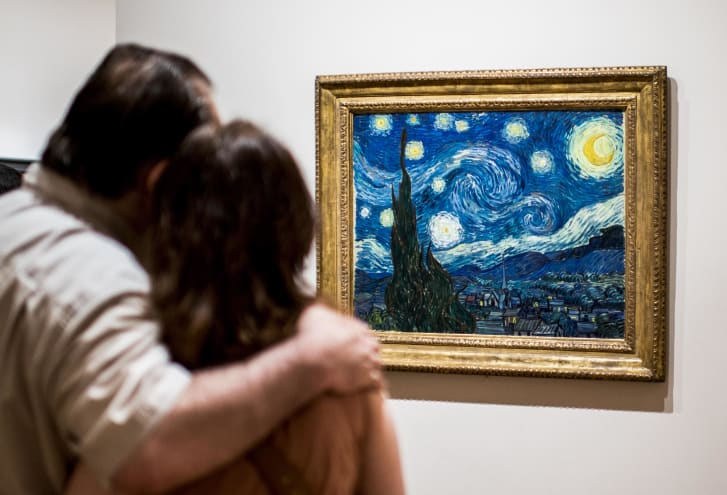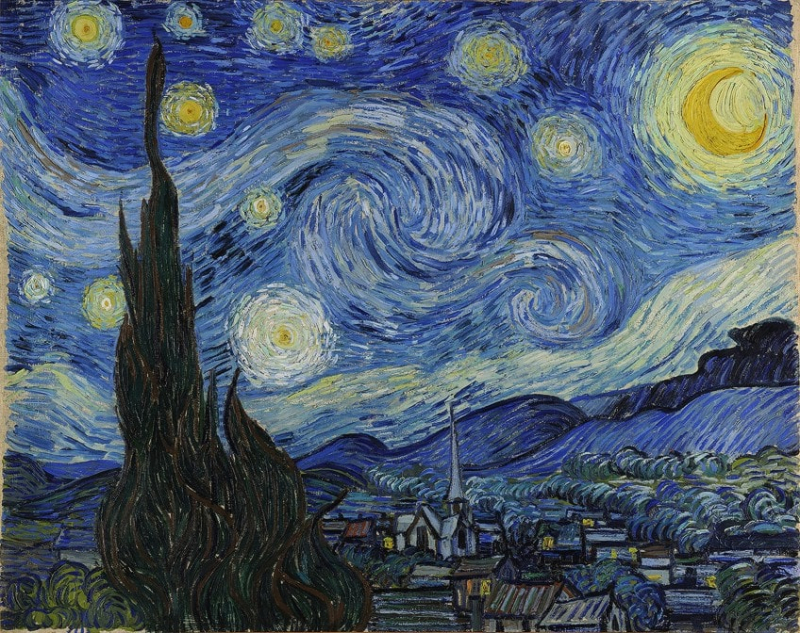The Starry Night
The oil-on-canvas piece is dominated by a night sky spinning with vibrant blue spirals, a brilliant golden crescent moon, and constellations portrayed as radiating spheres. A few cypress trees that resemble flames tower above the area from the side, their dark branches bending and swaying with the motion of the partially clouded sky. In the midst of all of this action, in the bottom right corner of the canvas, is a structured settlement.
Straight, ordered lines make up the modest homes and the church's tiny spire, which stands out against the blue hills' undulations.
The residences' dazzling bright squares evoke the warm lighting of seRené homes and offer a tranquil haven amidst the chaos of the artwork. After having a breakdown in which he used a razor to cut off a part of his own earlobe, Van Gogh painted for several months while confined to an institution. He painted when he was in the facility in bursts that alternated with sad states of mind.
The comparably abstract artwork serves as the emblematic illustration of van Gogh's daring and inventive application of heavy brushstrokes. Art aficionados have been captivated by the painting's brilliant blues and yellows as well as the dreamy, swirling mood for decades. When he created "The Starry Night," Van Gogh was receiving treatment for his mental condition in a hospital in Saint-Rémy, France. The scene outside his window in his room gave him inspiration.
Artist: Vincent van Gogh
Date: 1889
Where to see it: Museum of Modern Art (New York City)












